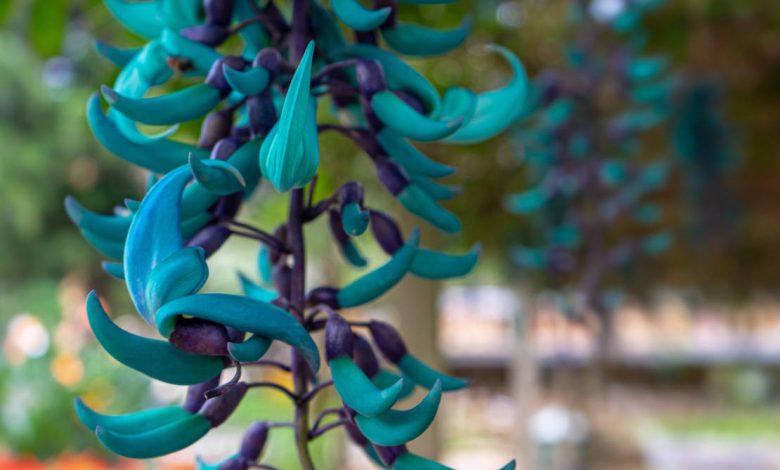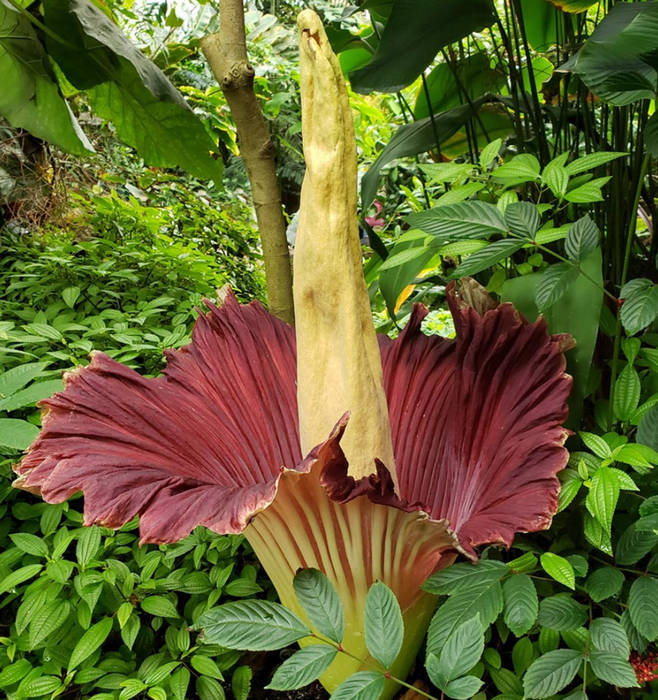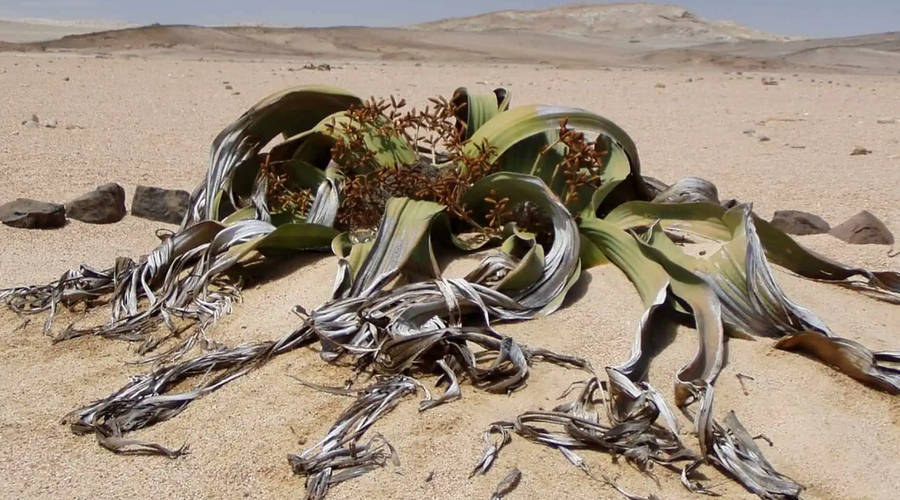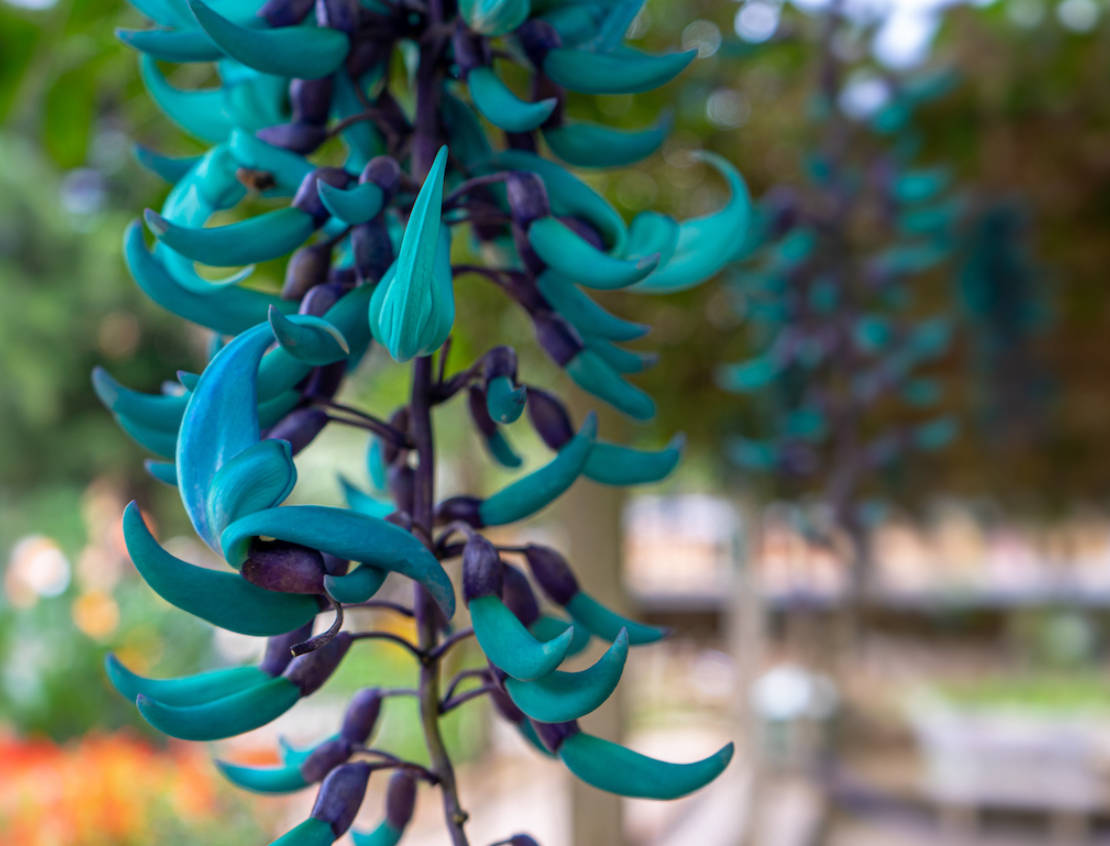10 Rare Plants That Will Astonish You with Their Beauty and Uniqueness

Rare plants have always held a special allure for botanists, gardeners, and nature enthusiasts. Their scarcity often underscores unique evolutionary paths and specialized habitats, making them fascinating subjects of study and conservation. This article delves into ten models of rare plants, each with its distinct characteristics and ecological significance. Whether you’re a plant aficionado or simply curious about the natural world, these rare botanical wonders are sure to captivate your interest.

1. Titan Arum (Amorphophallus titanum)
The Titan Arum, also known as the corpse flower, is famed for its immense size and pungent odor reminiscent of rotting flesh. Native to the rainforests of Sumatra, Indonesia, this plant can reach up to 10 feet in height. The corpse flower blooms infrequently, sometimes only once a decade, making its appearance a rare spectacle. Its smell attracts carrion-eating insects for pollination, a unique adaptation to its environment. Due to habitat destruction and its specific growing conditions, the Titan Arum is considered a rare and endangered plant.

2. Welwitschia (Welwitschia mirabilis)
Welwitschia is a bizarre and ancient plant found in the Namib Desert of Namibia and Angola. This plant has only two leaves that grow continuously throughout its life, which can span over a thousand years. Welwitschia’s unique physiology allows it to survive in one of the harshest climates on Earth, where rainfall is minimal and temperatures can be extreme. Its rarity is attributed to its restricted geographic range and specialized habitat requirements.

3. Rafflesia arnoldii
Rafflesia arnoldii, another remarkable plant from the rainforests of Southeast Asia, is known for producing the largest individual flower in the world, which can measure up to 3 feet in diameter. Like the Titan Arum, it emits a foul odor to attract pollinators. This parasitic plant lacks leaves, stems, and roots, deriving nutrients from its host vines. Rafflesia’s rarity stems from habitat destruction and its complex life cycle, which is intricately linked to its host plants.

4. Ghost Orchid (Dendrophylax lindenii)
The Ghost Orchid is an ethereal and elusive plant native to the swamps and forests of Florida and Cuba. Its delicate, white flowers appear to float in mid-air, giving it an otherworldly appearance. The Ghost Orchid requires specific fungi to thrive, which makes cultivation and conservation challenging. Its habitat is threatened by development and climate change, making it one of the rarest orchids in the world.

5. Jade Vine (Strongylodon macrobotrys)
The Jade Vine, with its striking turquoise flowers, is a rare and visually stunning plant native to the rainforests of the Philippines. This vine’s vibrant coloration is unlike anything else in the plant kingdom, and its flowers are pollinated by bats. Habitat loss due to deforestation has severely impacted the Jade Vine’s population, rendering it a rare sight even in its native habitat.
6. Youtan Poluo
Youtan Poluo is a mysterious and extremely rare plant that is said to bloom once every 3,000 years, according to Buddhist lore. Its tiny, white flowers are often found growing on various surfaces, including steel and glass, leading to much speculation and myth surrounding its origin and life cycle. Scientific study of Youtan Poluo is limited, adding to its enigmatic status among rare plants.
7. Middlemist’s Red (Middlemist camellia)
Middlemist’s Red is one of the rarest flowering plants in the world, with only two known specimens: one in New Zealand and the other in England. This camellia produces stunning pink-red flowers and was brought to England from China in 1804. Its extreme rarity is due to over-collection and habitat loss in its native region. Efforts are ongoing to propagate and conserve this beautiful plant.
8. Franklin Tree (Franklinia alatamaha)
The Franklin Tree is an extinct-in-the-wild species discovered along the Altamaha River in Georgia, USA, in the 18th century. It has striking white flowers with a sweet fragrance and glossy green leaves that turn red in autumn. Despite its extinction in the wild, the Franklin Tree survives in cultivation thanks to the seeds collected by early botanists. Its precise cause of disappearance remains a mystery, making it a symbol of conservation efforts.
9. Western Underground Orchid (Rhizanthella gardneri)
The Western Underground Orchid is an extraordinary plant that spends its entire life cycle below ground. Native to Western Australia, it relies on a symbiotic relationship with mycorrhizal fungi to obtain nutrients. This orchid’s rarity is due to its specialized habitat and the difficulty in locating and studying it. Conservation efforts are crucial to protect this hidden gem of the plant world.
10. Parrot’s Beak (Lotus berthelotii)
The Parrot’s Beak, native to the Canary Islands, is known for its striking, curved flowers that resemble a parrot’s beak. Once common, this plant is now critically endangered due to habitat destruction and competition from invasive species. Efforts to cultivate and reintroduce Parrot’s Beak into its native habitat are ongoing, but its future remains uncertain.
Conservation Efforts and Challenges
The conservation of rare plants presents unique challenges. Many of these species have highly specialized habitat requirements, making them vulnerable to environmental changes and human activities. Habitat destruction, climate change, invasive species, and over-collection are primary threats to these rare plants.
Conservationists employ various strategies to protect rare plants, including habitat preservation, cultivation, and reintroduction programs. Botanical gardens and seed banks play a crucial role in ex-situ conservation, providing a sanctuary for rare species and a resource for future reintroduction efforts. Public awareness and education are also vital in promoting the conservation of rare plants.
The Importance of Rare Plants
Rare plants are not only fascinating for their uniqueness but also crucial for biodiversity. Each species plays a specific role in its ecosystem, contributing to ecological balance and resilience. The loss of a rare plant can have cascading effects on its habitat and the species that depend on it.
Moreover, rare plants often possess unique genetic traits that can offer valuable insights into plant evolution, adaptation, and potential applications in agriculture and medicine. Preserving rare plants ensures that these genetic resources remain available for future research and development.
Conclusion
The ten models of rare plants highlighted in this article represent just a fraction of the incredible diversity and wonder of the plant kingdom. From the towering Titan Arum to the subterranean Western Underground Orchid, each plant tells a story of adaptation, survival, and the delicate balance of nature. Conservation efforts are essential to protect these botanical treasures and the ecosystems they inhabit.
As we continue to explore and understand the natural world, the importance of preserving rare plants becomes ever more apparent. They are not only a source of wonder and inspiration but also a critical component of our planet’s biodiversity and ecological health. By appreciating and protecting rare plants, we contribute to a richer, more diverse world for future generations.
